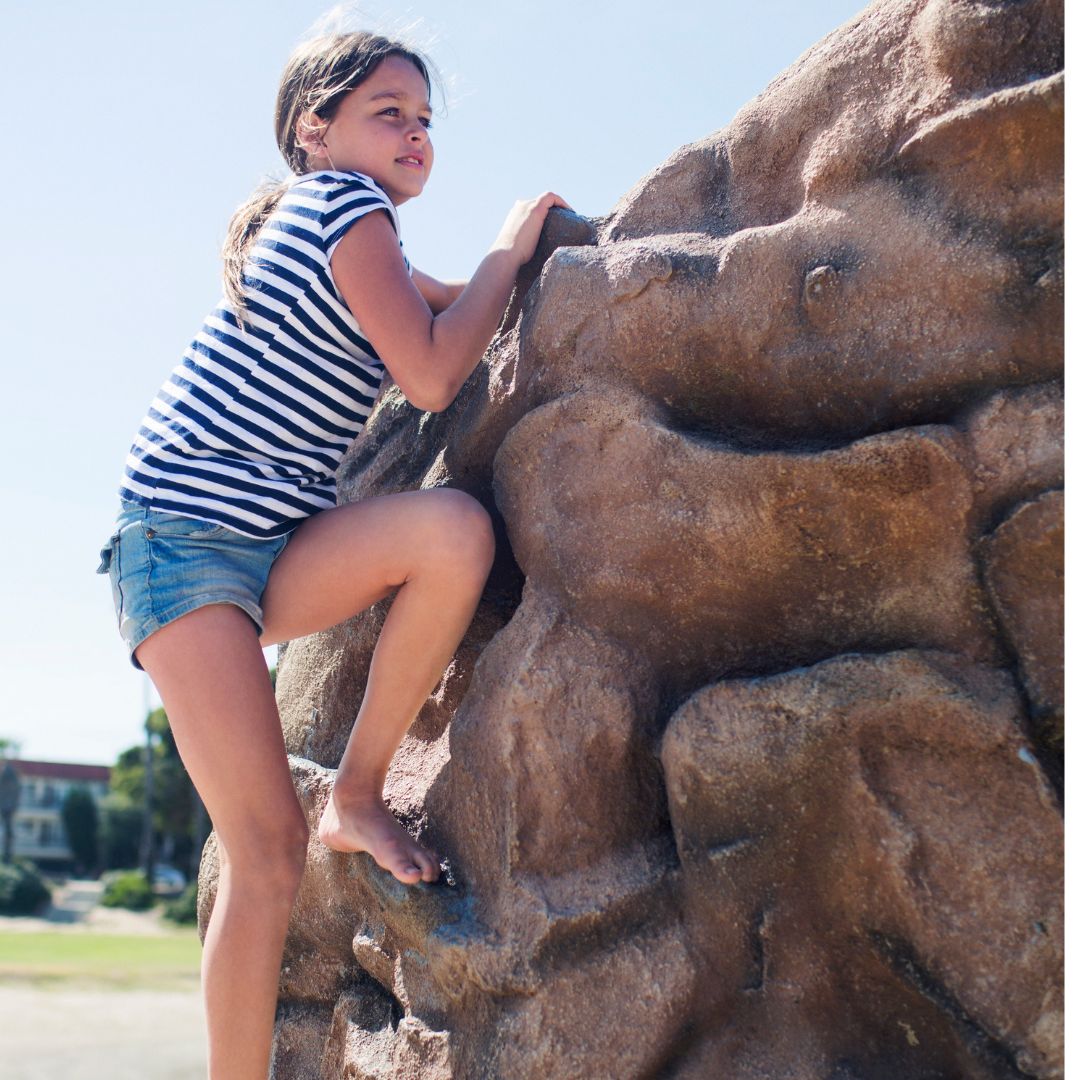
There’s no doubt: many impressive playground structures and features are available to parks and recreation agencies.
Play structures are safer, more durable, and allow for more inclusive play.
But one type of playground gaining more popularity may be surprising. Some parks and municipalities go more “natural” with their playground features.
Natural playgrounds are worth considering to give children a unique way to play, explore, and socialize with their peers.
So let’s get a better understanding of natural playgrounds, their components, and how they are beneficial.
But wait--are natural playgrounds a maintenance team’s nightmare? Don’t worry. We’ll touch on that too.
What is a Natural Playground?
The name doesn’t lie--a natural playground is a play area designed to incorporate natural elements for play. These can include trees, rocks, water, sand, and more.
Designers combine several natural elements to allow children more creative and unstructured play. This type of playground encourages children to appreciate nature--and play in it--on a whole new level.
In many areas--especially metropolitan areas--parents don’t let their kids run off into the woods for hours of unstructured play. Natural playgrounds offer a similar experience with the added benefit of enjoying areas inspected and maintained by professionals.
Some features that may get included in a natural playground:
- Large Sandboxes
- Log Slice Climbers
- Rock Trails
- Tree Stumps for Balancing
- Shallow Streams
- Tree Houses
- Slides Built into Existing Hills
With features like these, you may wonder if natural playgrounds are inclusive and accessible.
And yes, natural playgrounds provide a more welcoming and accessible area for children of all ability levels.
A key difference between natural and conventional playgrounds is that the features are more open to interpretation. In other words, there is no “right way” to play on the components. They use the playground in a way that is natural and fun for them.
Natural Playgrounds vs. Nature-Inspired Playgrounds

A majority of the materials used for natural playgrounds incorporate the actual environment. Stairs may be tree stumps. Logs can be used as balance beams. Rocks can be used for climbing, balancing, or building.
Of course, getting everyone to buy into a purely natural playground may take a lot of work. Nature-inspired playgrounds are the middle ground between natural play areas and more conventional playgrounds.
Nature-inspired playgrounds use elements of the natural world using more standard materials, designs, and structures. Familiar structures like panels, steppers, spring riders, and climbers may have the look and texture of natural objects.
Benefits for Agencies
We have already touched on some benefits children get from these natural play structures. So what about the agencies?
Here are some benefits to consider:
Truly Unique Play Area: Play areas can be designed with the current layout of your asset, which offers an opportunity to make a park unlike anything else in the area.
Give Asset a More Natural Look: Big, colorful play structures are visually fun for children. Natural playgrounds allow a playground to blend in more with the surroundings--and still be fun.
More Flexibility in Building: Natural playgrounds can be created using uneven land and other rugged terrains that may pose challenges or expensive alterations for more conventional playgrounds.
Longer Lasting: With the proper care and maintenance, natural playgrounds can last much longer than some conventional parks.
Maintenance Considerations
So are natural playgrounds going to make a busy parks maintenance department even busier?
Most conventional playgrounds require inspections and some degree of maintenance. Worn equipment also needs to be replaced.
Natural playgrounds can be designed and organized to help reduce maintenance costs and labor. Here are some examples of how:
- Letting the area grow naturally to resemble a forest or field even more.
- Getting local groups or garden clubs to plant and maintain gardens in or around the playground.
- Having schools, scouts, or other organizations do a work day to help sustain the park.
Some elements of natural playgrounds, like rocks, don’t break down or need parts replaced.
Others may require some maintenance.
For example, cleaning and sealing outdoor wood will help prevent rotting and cracked natural elements. Spar urethane coatings help to protect the wood from UV rays and water.
Other potential maintenance tasks for a natural playground include:
- Maintaining surfaces to reduce hazards and provide a soft landing
- Inspecting elements for rotting, weak spots, or sharp edges developing
- Monitoring any movable objects to ensure they don’t cause unnecessary hazards
- Checking for invasive plants or dangerous pests
The area around natural playgrounds can be designed with your team’s maintenance capabilities in mind. You can create a design that isn’t a maintenance nightmare by understanding your team’s current workload and availability.
The Takeaway
There are so many benefits of being in nature. As parks agencies, we have the opportunity and obligation to encourage those of all ages to reconnect with nature.
Natural playgrounds provide unique, stimulating play places for children to explore and interact with nature. Careful planning and design can create a space that suits the needs of the community's youngest members.
Like any playground, natural playgrounds require maintenance and inspections to ensure they are safe and functional. The planning process should take into account the maintenance team’s resources to inspect and maintain the park.
